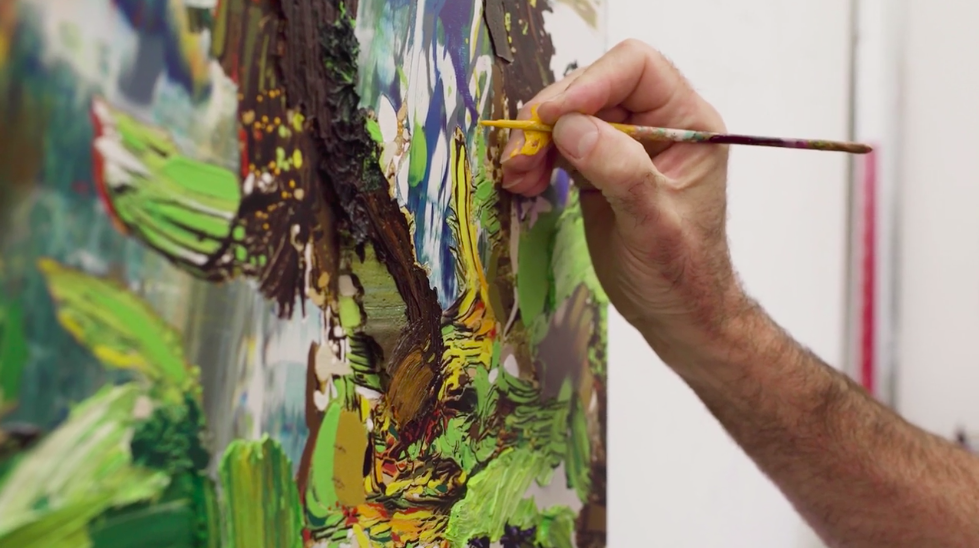
Introduction by Maite van Dijk Senior Curator of Paintings, Van Gogh Museum Amsterdam
In 1874, long before Vincent van Gogh decided to become an artist himself, he wrote in a letter to his brother Theo: “Painters understand nature and love it, and teach us to see.” Nature became his most important source of inspiration in his later paintings and drawings. Van Gogh’s incredible eye for detail and for the beauty of his surroundings continues to move and inspire people to this day. Van Gogh’s words apply equally to the artistic vision and philosophy of the British artist Jason Brooks (b. 1968). In an age when the digital world is increasingly dominant, Brooks investigates how the power of painting can alter and enrich our perception of the everyday. Brooks’s paintings originate in very diverse art objects—from amateur landscapes he finds in charity shops or on eBay to poems by the famous nineteenth-century poet John Clare.
He uses and quotes or paraphrases the work of others to translate that inspiration into a new pictorial language. His inspirations cannot necessarily be recognized in the finished work. As Brooks himself says: “the art is in how you stray, not how closely you follow the original”. Brooks is fascinated by the language of paint and its transformative effect. Just like Van Gogh, he invites us through his painting to look differently at everyday. The artist titles this as “the
subject is not the subject”. In a series of paintings—two made especially for the exhibition in the Van Gogh Museum—Brooks reflects on Van Gogh’s work. Countering the widespread romantic myth that Van Gogh was an impulsive artist, Brooks contends—rightly—that every one of Van Gogh’s brushstrokes was considered and purposeful.
Brooks has looked very hard at Van Gogh’s work (Wheatfield with Crows and Tree Roots, for instance, can be seen as sources of inspiration) but nowhere does he simulate or imitate. Brooks is concerned with a visual language at meta-level, a language in which all the different sources are forged into a new whole. Brooks builds his paintings up slowly, using an eclectic
assortment of materials and techniques—from airbrushing to oil paint. Through this complex and sometimes confusing layering of media and materials, the artist invites us to look extra closely—and perhaps to see more. To see more in Brooks’s own superb paintings, and in Vincent van Gogh’s, too. In other words, Brooks gets us to look at and think about his own methods, artistic vision and philosophy, and Van Gogh’s. Such artistic inspiration and interaction between artists is precisely what Van Gogh so passionately longed for: “Painters—to speak only of them—being dead and buried, speak to a following generation or to several following generations through their works.” Van Gogh and his work live on in modern and contemporary art. The Van Gogh Museum has been making small exhibitions of modern and contemporary art since 2014. These interventions in the last gallery of the museum show the way many generations of artists have drawn inspiration from Van Gogh’s work. There have been displays of paintings by Francis Bacon, Frank Auerbach, Willem de Kooning, John Chamberlain, Peter Doig, Matthew Day Jackson and others. Jason Brooks’s richly layered paintings are a powerful and inspiring continuation of this series.
19 October 2019 – 20 January 2020